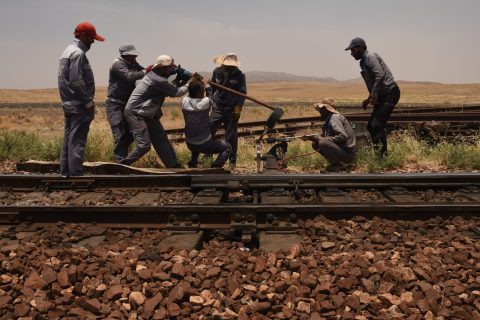China to meet 5 Central Asian countries, 3 rail topics to expect

China’s president Xi Jinping is to meet with the leaders of five Central Asian countries in Xi’an this month. Delegations will undoubtedly echo the synergy of the Silk Road development, especially on the Middle Corridor. What can we expect from this high-level meeting?
The summit will be held in Xi’an on 18 and 19 May. According to the Chinese Ministry of Foreign Affairs, the Presidents of Kazakhstan, Kyrgyzstan, Tajikistan, Turkmenistan and Uzbekistan will visit China. Currently, no specific agenda has been released regarding the topics to be discussed. However, we have listed the most likely rail freight issues that bind these countries.
CKU railway
The construction of the China-Kyrgyzstan-Uzbekistan (CKU) railway has been under discussion for over 20 years and is set to begin in the autumn of 2023. Kyrgyzstan’s President, Sadyr Japarov, announced in May 2022 that a feasibility study was being prepared. The study is supposed to be completed before June 1 this year, according to the Kyrgyz National News Agency Kabar.
On 24 November, Kyrgyz Prime Minister Zaparov stated that the construction of the China-Kyrgyzstan-Uzbekistan railroad will start in the autumn of 2023. Once completed, the CKU railway will connect China directly with Iran (via Turkmenistan) and Turkey, and eventually to Europe. According to a government source in Uzbekistan, this route will reduce the journey to Europe by 900 kilometers and save seven to eight days in transit.
The planned total length of the CKU railway is approximately 523 kilometers, with 213 kilometers in China, 260 kilometers in Kyrgyzstan, and the remaining approximately 50 kilometers in Uzbekistan.
Caspian sea intermodal
In addition to the CKU railway, two Central Asian countries, Kazakhstan and Turkmenistan, also contribute to the capacity of the Middle Corridor. Three key ports, namely Aktau and Kuryk in Kazakhstan, and Turkmenbashi in Turkmenistan, will play a significant role in the cross-Caspian intermodal capacity. The development of these ports is already underway, at least on paper.
On 3 March, the Prime Minister of Kazakhstan, Alikhan Smailov, chaired a meeting on measures to develop international transport routes across the Caspian Sea and revealed plans to upgrade Aktau’s infrastructure. The construction of a container center in Aktau to serve the Caspian Sea connection was discussed. The meeting noted that by 2030, it is expected that 10 oil barges, 8 ferries, 6 tankers, and one container ship will be operating in the Caspian Sea.
Central Asia market
More and more China-Europe Express trains are ending their journeys in Central Asia as they head west. One simple illustration of this shift is the renaming of west-bound trains, such as those departing from Alashankou terminal, which have exceeded 2000 trains heading west this year. Rather than being called China-Europe Express, they are now named China-Europe (Central Asia) Express.
In addition to serving as part of the middle corridors, the Central Asian markets themselves offer opportunities. As Ian Rawlinson from APM Terminals pointed out at the European Silk Road Summit 2022, Central Asia is a market that has long been overlooked by the world. Historically, the region has been considered a satellite region of Russia, but it is in fact very westernised. This can be seen not only in the number of Western companies established in Central Asia, but also in the region’s demand for Western products. Therefore, with the market changing in Central Asia after the pandemic, its role in international supply chains is shifting accordingly.




